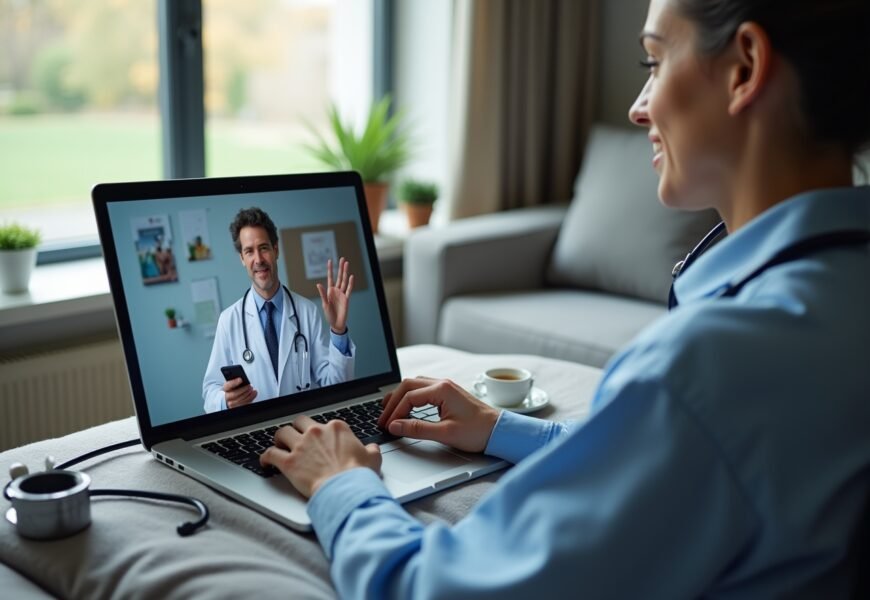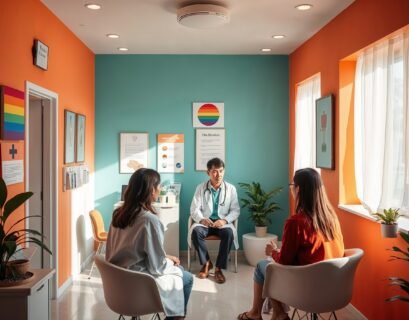Over 30 million Americans live in areas with limited access to healthcare, facing barriers that prevent timely medical care. This staggering reality impacts countless lives, from single parents in rural towns to urban residents struggling with transportation. For many, securing basic health services feels like an uphill battle, compounded by financial constraints, geographic isolation, or a complex healthcare system. Take Sarah, a single mother in a small rural community, who skips her own doctor visits because affordable childcare and transportation are out of reach. Her story echoes a widespread challenge, underscoring the pressing need for creative solutions to improve access to healthcare.
Unpacking the Challenges of Healthcare Access
The Layers of Accessibility
Access to healthcare goes beyond the presence of a nearby clinic. It’s a tangled web of social, economic, and geographic factors. In bustling cities, unreliable transportation can keep people from appointments. In rural regions, the nearest doctor might be hours away, turning routine checkups into daunting expeditions. Studies reveal that millions reside in healthcare deserts, where services are sparse and unevenly distributed, amplifying the struggle to receive timely care.
Even for those with financial stability, hurdles persist. Navigating insurance policies, finding specialists, or decoding medical benefits can feel overwhelming. This complexity often discourages people from seeking help, allowing minor health issues to spiral into serious conditions. The result is a vicious cycle of declining health and growing frustration, highlighting why innovative approaches are essential to bridge these gaps.
Creative Solutions to Improve Access to Healthcare
While the obstacles are significant, they’ve inspired a wave of ingenuity among healthcare professionals and organizations. From cutting-edge technology to grassroots community efforts, new strategies are emerging to tackle the root causes of inaccessibility. By addressing administrative hurdles, emotional barriers, and logistical challenges, these solutions offer hope for a more equitable healthcare landscape.
Harnessing Technology for Better Reach
Technology has opened doors to healthcare delivery in remarkable ways. Telehealth, for instance, allows patients to consult with doctors from the comfort of home via video calls or messaging platforms. This eliminates travel costs and time, making it a lifeline for those in remote areas or with packed schedules. To make the most of telehealth, check your insurance for coverage details and ensure a stable internet connection. Such tools are transforming how care is delivered, bringing medical expertise closer than ever before.
Strengthening Communities Through Partnerships
Local involvement is a cornerstone of expanding access to healthcare. Community organizations can fill critical gaps by offering resources, education, and financial aid. Nonprofits hosting free screening events or vaccination drives, for example, directly benefit underserved groups. Collaborating with schools, faith-based groups, and businesses can also create networks that guide people to reliable care while raising awareness about available options.
Boosting Health Literacy
Understanding healthcare systems, insurance plans, and medical terms is a vital yet often neglected piece of the puzzle. When people lack this knowledge, they’re less likely to seek care or advocate for themselves. Community educators and healthcare workers can offer workshops to clarify these topics, while providers can prioritize plain language and visual aids. Many hospitals now provide multilingual materials to ensure patients leave appointments informed and confident.
Tackling Transportation Barriers
For countless individuals, getting to a healthcare facility is half the battle. Creative solutions are stepping in to ease this burden. Ride-sharing companies are teaming up with clinics to offer discounted or free trips to appointments. Meanwhile, some local governments and nonprofits are launching shuttle services or volunteer driver programs, ensuring that distance doesn’t stand in the way of care.
Real Stories, Real Impact
Maria’s Turnaround
Maria, a 42-year-old from a rural area, once struggled to manage her diabetes due to a lack of transportation. Regular doctor visits were a logistical nightmare until her community introduced a mobile health unit. Now visiting monthly, the unit brings doctors, medications, and nutrition advice right to her neighborhood. Maria’s health has improved, and she’s not the only one benefiting; the program has sparked a ripple effect, encouraging more residents to prioritize their well-being.
Empowerment Through Local Advocates
In a city neighborhood plagued by chronic illnesses like diabetes and heart disease, a nonprofit launched a program with “health navigators.” These trained community members help residents understand their options and connect with services. One navigator shared the story of an elderly man who, with help, secured home care that preserved his independence. Such efforts show how local leadership can transform access to healthcare from the ground up.
Overcoming Persistent Hurdles
Easing Financial Strain
Money remains a towering barrier for many. Even with insurance, copays and deductibles can strain budgets. Clinics offering sliding-scale fees, payment plans, or assistance programs can lighten the load. Health savings accounts are another option worth exploring. Community organizations often step in to guide families toward financial relief, ensuring care isn’t a luxury reserved for the wealthy.
Breaking Down Stigma
Seeking help isn’t always easy, especially in communities where health topics like mental wellness carry a stigma. Open dialogue can shift this mindset. Public campaigns featuring personal stories, like Maria’s, normalize reaching out for support. By framing healthcare as a shared human experience, we can encourage more people to take that first step without hesitation.
Advocating for Systemic Progress
While individual efforts matter, lasting change requires broader action. Policies that expand Medicaid, fund community clinics, and support telehealth can reshape healthcare access on a grand scale. Getting involved—whether by contacting lawmakers or joining local forums—gives everyone a chance to push for a system that serves all.
A Path Forward
Improving access to healthcare is a complex journey, but it’s far from impossible. With compassion, innovation, and collaboration, we can build a system that lifts up everyone, no matter where they live. Sarah’s sacrifices, Maria’s renewal, and countless other stories prove that progress is within reach. By embracing technology, strengthening communities, enhancing education, and addressing financial and systemic challenges, we move closer to a world where healthcare is a universal right, not a privilege.
The road ahead calls for commitment and creativity. Together, we can forge a future where no one is left behind, fostering healthier lives and stronger communities for years to come.














